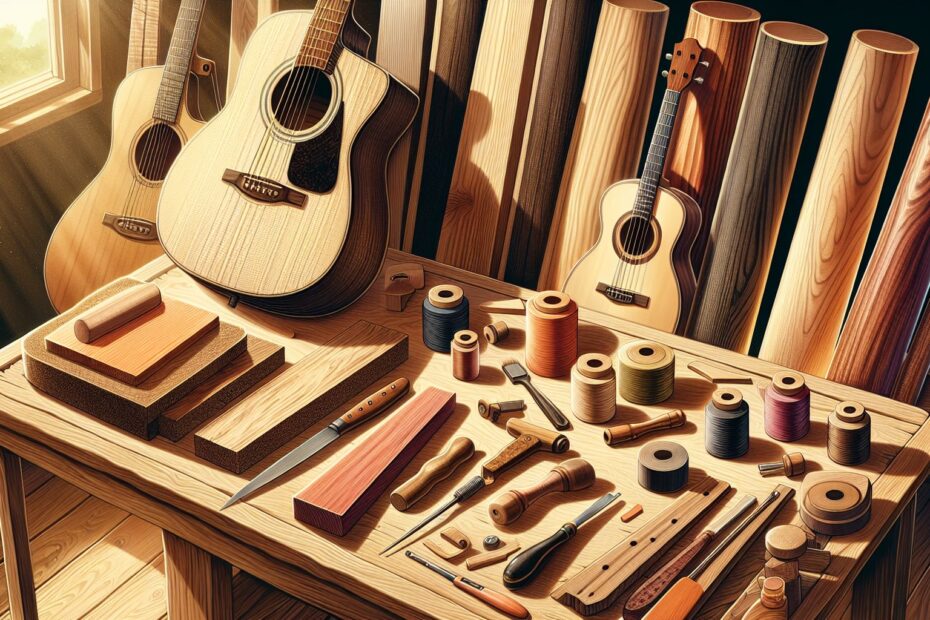Are you a passionate craftsman interested in the art of building acoustic guitars? In the journey of creating a musical masterpiece, choosing the right wood is crucial. The wood used for the body, top, back, sides, and neck will greatly impact the tone, resonance, and overall quality of the instrument. In this blog post, we will explore some of the best wood types for building an acoustic guitar and guide you on your path to crafting excellence.
Introduction
Crafting an acoustic guitar is an intricate process that requires skill, dedication, and a keen eye for detail. A well-crafted instrument combines the craftsmanship of the builder with the unique properties of carefully selected wood types. Each piece of wood contributes to the sound and character of the guitar, making the choice of wood a critical consideration.
The Body
The body of an acoustic guitar plays a vital role in determining the overall sound quality and volume. A popular choice for the body is Mahogany, known for its warm and rich tone. Mahogany produces a strong midrange, balanced with crisp highs and deep lows. Another excellent choice is Rosewood, which offers a wide dynamic range, clarity, and enhanced sustain. The distinct tonal properties of these woods make them beloved options for crafting exceptional acoustic guitar bodies.
The Top
The top, or soundboard, is considered the heart and soul of an acoustic guitar. It is where the vibrations resonate and produce the unique sound that captures our hearts. A highly regarded wood for the top is Cedar, which produces warm and sweet tones with a quick response and good volume projection. Spruce, on the other hand, is renowned for its versatility and ability to deliver bright tones with great volume and projection.
The Back and Sides
The back and sides of the guitar contribute to its overall tonal balance and projection. One of the most popular choices for the back and sides is Maple, known for its bright and clear tone. Maple offers excellent projection, great sustain, and a balanced sound throughout the tonal spectrum. Alternatively, you could consider using Walnut, which brings warmth and depth to the sound while still offering clarity and note separation.
The Neck
The neck of an acoustic guitar provides stability and support to the instrument, and it also influences the overall tone. Mahogany is a favored choice for necks due to its strength, durability, and warm characteristics. It provides a solid foundation while enhancing the instrument’s resonance. For those seeking a brighter tone, a Maple neck might be the perfect option. Maple offers a crisp and articulate sound, adding clarity and definition to each note.
Conclusion
Crafting an acoustic guitar is an art requiring meticulous attention to detail and a deep understanding of wood properties. Choosing the right wood types is fundamental to create an instrument of exceptional tonal quality. Mahogany, Rosewood, Cedar, Spruce, Maple, and Walnut are some of the best woods for building a guitar. These options present a range of tonal characteristics, ensuring you can select the perfect combination to create the sound you desire.
Remember, the journey of crafting an acoustic guitar is as rewarding as the destination. Embrace the craftsmanship, explore the beauty of wood, and let your creativity guide you toward building an instrument that resonates with both your passion and the hearts of those who hear it.
Note: Craftsmanship and quality are paramount when building an acoustic guitar. Always ensure you source your wood from reputable suppliers, take proper precautions in handling, and follow best practices in instrument construction.
